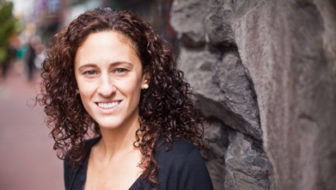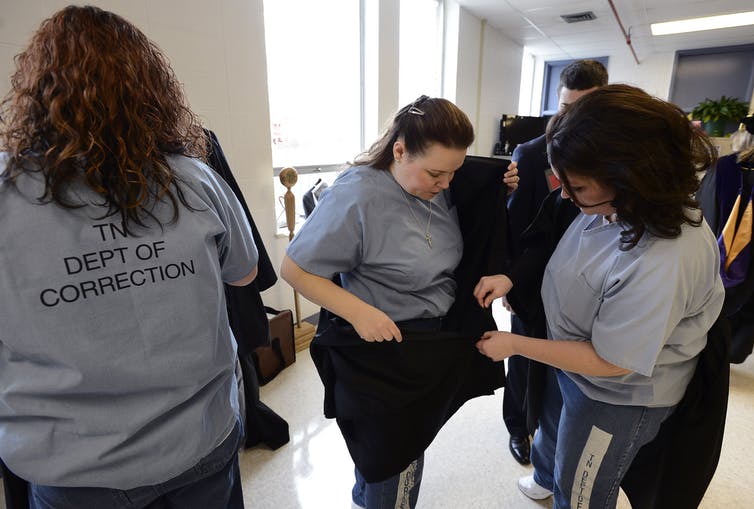In 2007, I gave someone a second chance. I was in Danbury (Conn.) Federal Correctional Institution recruiting women for a new program for people returning from prison that I was running in New York City.
A woman approached me and handed me her portfolio. It was basically a detailed resume of her accomplishments, skills and goals for the future.

Andrea Cantora
Over a two-year period before this, I had visited at least six female facilities in New York and Connecticut and met hundreds of women looking to enter our program. But when Jamila approached me, something stood out.
She was bold, persistent and confident about her future. Her portfolio showed that she took advantage of every educational program available to her while in prison. When she was released in 2007, I hired her as an administrative assistant intern. Over the next several years she worked her way up to a top management position at the same organization that ran the program.
A decade later I met another person, Chris Wilson, who created a master plan of what he hoped to accomplish in life. He, too, had embraced books, self-education and formal education while incarcerated. Even though he was serving a life sentence, he believed he could get out of prison and persisted until his judge gave him a second chance by reducing his sentence.
Like Jamila, part of Chris’ success stemmed from the opportunity to get a GED, an associate degree and complete many other programs while in prison. But he also went a step further and engaged in many years of self-education — from learning languages to understanding the operations of the stock market. Chris realized that through education, he could achieve success. Once released, Chris developed his own businesses, created artwork and wrote a memoir, titled “The Master Plan: My Journey from a Life in Prison to a Life of Purpose.”
In between meeting Jamila and Chris, I met hundreds of incarcerated people who clung to education as if it were a lifesaver. I know education can transform lives because I see it constantly in the incarcerated — and formerly incarcerated — people I’ve met. I see it every week when I enter prison to direct the University of Baltimore’s Second Chance College Program.

Mark Zaleski/AP
Women serving time in the Tennessee Prison for Women put on gowns for a 2013 graduation ceremony in Nashville, Tenn. The women had earned an associate’s degree through a Lipscomb University prison education program.
Education changes self-image
I’ve been running the program since 2016, when the University of Baltimore became one of 67 colleges to participate in the U.S. Department of Education’s Second Chance Pell Experimental Sites Initiative.
In the last three years, the program has served 63 students, with 43 currently enrolled and taking courses towards a bachelor’s degree in human service administration.
As one who studies correctional education and prisoner reentry, I have seen how formal education changes how men and women in prison view themselves and their future. It gives incarcerated students a sense of confidence, builds self-esteem and increases maturity.
I’ve observed that being a college student provides a sense of hope and accomplishment that is often absent inside prisons. It also creates a sense of community among those who are participating. Other incarcerated people see all of this — and they want the same thing.
The prospect of becoming a college student in prison seems to have a positive influence inside the institution. Every week men approach me, asking “How can I apply?” Cynics might suspect they do this just to get some time outside their cells. If so, it is time well spent. If they are persistent enough, they end up excelling and become honors students. From what I’ve seen, they all work incredibly hard to complete tough courses like college algebra, psychology and biology.
Education is not only empowering for the individual, but it is also contagious. I have witnessed how education can indirectly influence the college trajectory of sons, daughters, nieces, nephews and even parents of incarcerated students. My incarcerated college students often tell stories about the conversations they have in the visiting room with their family about the books they are reading and the lessons they are learning in the classroom. Their education journey has inspired family members to start, or continue, their own journeys of education.
Prison education programs achieve all the positive benefits that politicians and the public desire — increased employment and higher earnings, as well as other financial benefits.
Educating people in prison also makes our communities safer — statistics show people who participate in post-secondary education in prison are 43 percent less likely to return to prison and more likely to find work.
Political action needed
With decades of research and anecdotal evidence, prison education and vocational approaches are being embraced by people from all political spectrums. For instance, in the foreword to “Education for Liberation: The Politics of Promise and Reform Inside and Beyond America’s Prisons,” Newt Gingrich, the former Republican House speaker, and Van Jones, a news commentator and former Obama administration official, write: “Empowering people in prison through greater access to quality educational opportunities is a worthy effort to increase public safety, strengthen our democratic institutions, and grow our economy.”
Increasing the access to prison education and vocational programming will likely result in more benefits for incarcerated people, their families and society. The newly passed First Step Act will perhaps do this in the federal system, as the bill is expected to increase funds for vocational and rehabilitative programming.
But it would also help to lift the federal ban on Pell Grants for incarcerated people. Lifting this ban would allow states to increase their education and vocational programming options. Together these legislative changes will make communities safer and give more people in prison — the Jamilas and Chris Wilsons of the world — a second chance.
This article was originally published on The Conversation. Read the original article.
Andrea Cantora’s primary research interests are focused on issues related to incarceration, prison reentry and urban crime prevention. She is an associate professor of criminal justice at the University of Baltimore.
![]()
